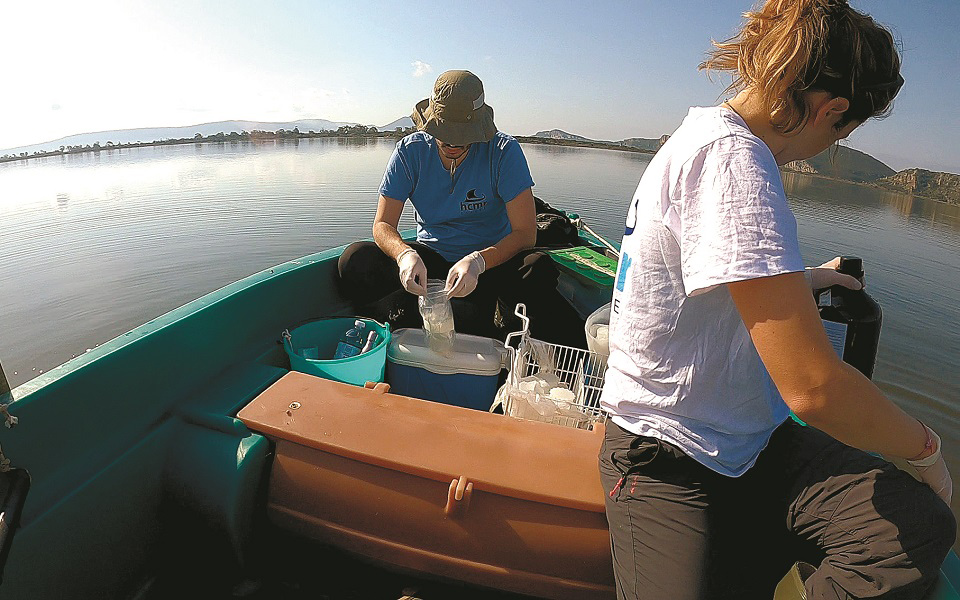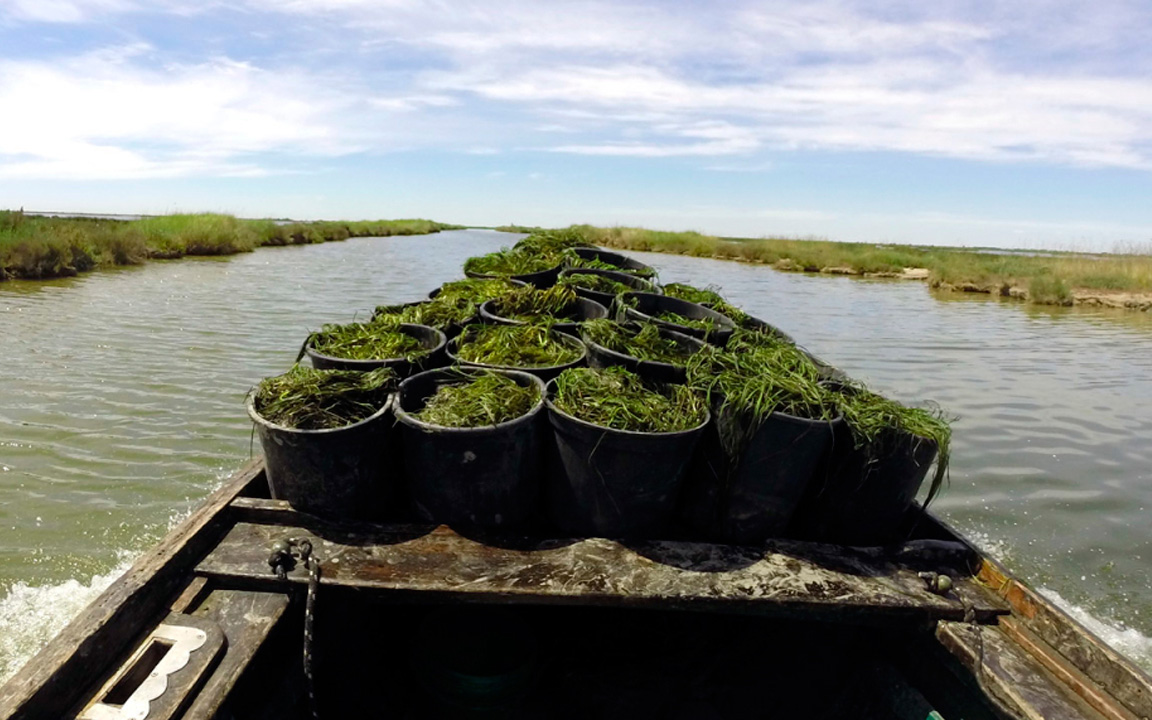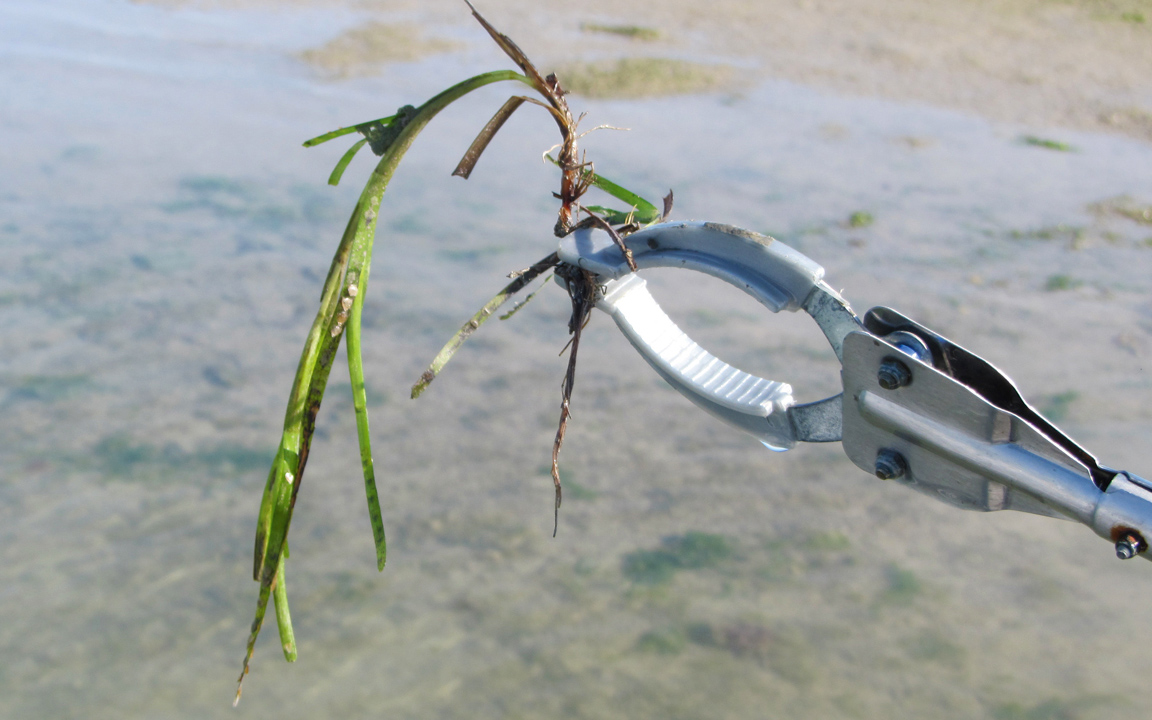Just like our forests, which are being lost at an alarming rate, our valuable seagrass meadows also need to be looked after and reforested to stem the progression of their degradation and destruction. This is why the work being done by a team of “marine gardeners” working on a Hellenic Center of Marine Research (HCMR) program for the revival of Greece’s seagrass meadows is so important.
The program has started with the Amvrakikos Gulf in the northwestern Greece, an area declared a national park for its enormous wealth of biodiversity, both on land and at sea.
“The plant coverage of the ocean floor has receded gradually, leading to its complete disappearance in some parts. One of the immediate effects has been a significant reduction in fish populations,” HCMR researcher Sofia Reizopoulou tells Kathimerini.
According to the experts, pollution from chemical fertilizers, livestock farming and fish farming are the key culprits behind this environmental degradation, but hydroelectric dams have also interrupted the flow of fresh water into the sea, upsetting hydrological conditions.
“The coastal wetlands have receded by 60-70%, while climate change is also having a negative impact, raising the temperature of the water in the gulf,” notes Reizopoulou. “Seagrass meadows, phanerogams, are very productive ecosystems and act as a shelter for many organisms, including most commercially exploited fish,” she adds, using the scientific term for plants that produce seeds, also known as spermatophytes.

© Hellenic Center of Marine Research (HCMR)
The HCMR program is part of a larger European Union effort called Life-Transfer and the Greek institute has teamed up with several European universities, as well as working with the Amvrakikos Gulf – Lefkada Management Body for the reforestation of the area’s lagoons.
The focus of the program is to transplant meadows of Zostera noltii, Cymodocea nodosa and other types of seagrass that grow in the area.
“We started in a pilot phase at the Logaros lagoon, recording the environmental conditions, mapping the meadows, taking samples and training the fishermen who will be contributing to the project. The aim is to start the transplantations in September or October. We’ll begin in areas where coverage is sparse but not entirely gone, while we’ll also be studying the quality of the areas where we will be getting the transplant material from,” Reizopoulou, who is the project’s scientific supervisor, explains.
The plan is to finish with Logaros by 2025.
“We will employ a technique that has been successfully applied in Venice for the past decade,” she says.
The contribution of local fishermen is also noteworthy. “They have embraced the initiative, to some degree because they have seen the consequences of the problem in the dramatic decline of their catches,” says Reizopoulou.
Similar programs are being conducted in other parts of Italy and in Spain. According to HCMR, meanwhile, there is evidence to suggest that depleted seagrass meadows near coasts and river deltas can revive naturally within 15 to 25 years with the cessation or reduction of destructive human activity. Complete restoration, however, would take much longer, which is where the scientists come in.
Seagrass meadows belong to a category known as blue carbon ecosystems, meaning that they store significant amounts of carbon and help mitigate the effects of greenhouse gas emissions. When they die or recede, though, they release the stored carbon. Sea quality degradation, climate change and human activities like intensive fishing are taking a toll, too.

© Adriano Sfriso/LIFE-SeResto
“It is a bad development on two fronts. On the one hand, the seagrass meadows will not be able to absorb carbon at the same rate and, on the other, they will release the huge quantities they have already stored, exacerbating climate change,” says Dr Evgenia Apostolaki, an HCMR researcher.
“Neptune grass meadows are regarded as the king of all other seagrass meadows as far as blue carbon is concerned, as it is a plant that forms reefs with its root system and the materials on the ocean floor, trapping organic matter. When these reefs are destroyed – by environmental causes, an anchor or some other implement – the carbon is released back into the environment,” explains Apostolaki, referring to a valuable type of seagrass that is endemic to Greece and other parts of the Mediterranean.
HCMR is studying Neptune grass (Posidonia oceanica) meadows in the Greek seas. “Our research will soon focus on the impact of climate change on the durability of these meadows in the Aegean and their ability to store carbon,” says Apostolaki, who is responsible for the HCMR program, which is being coordinated by Giorgos-Angelos Hatiris at HCMR Rhodes.
Protecting seagrass meadows, she adds, “is not just cheaper, but also more effective, as it also addresses the causes degrading marine ecosystems.”
This article was first published on ekathimerini.com.











